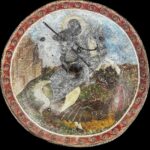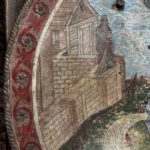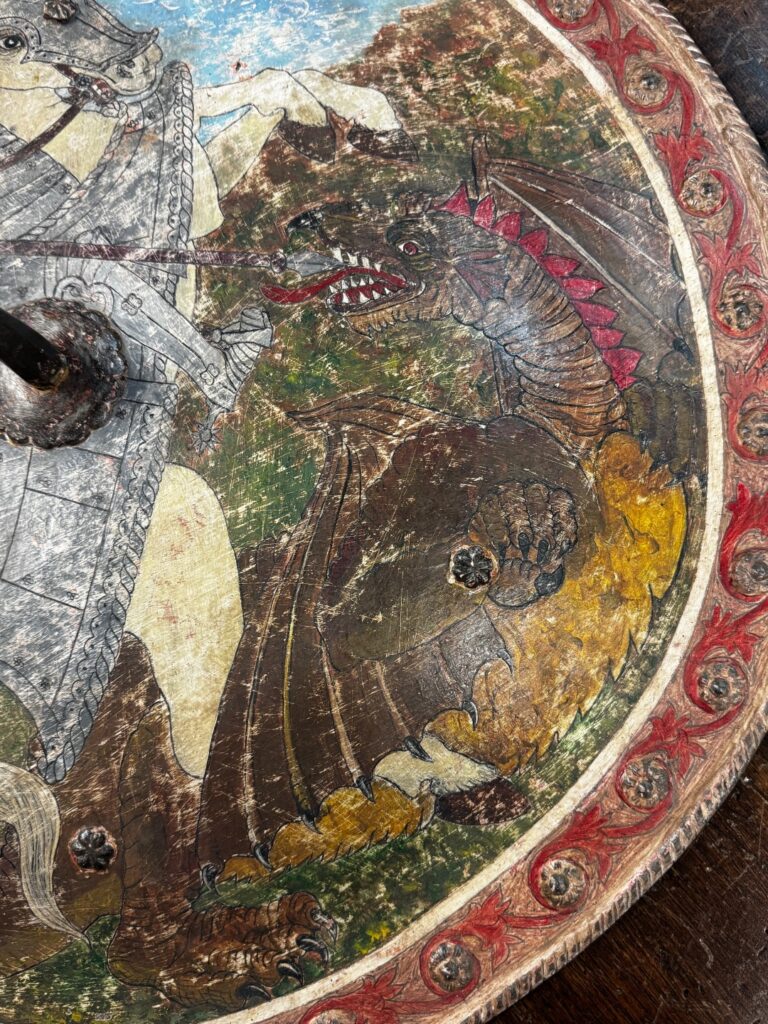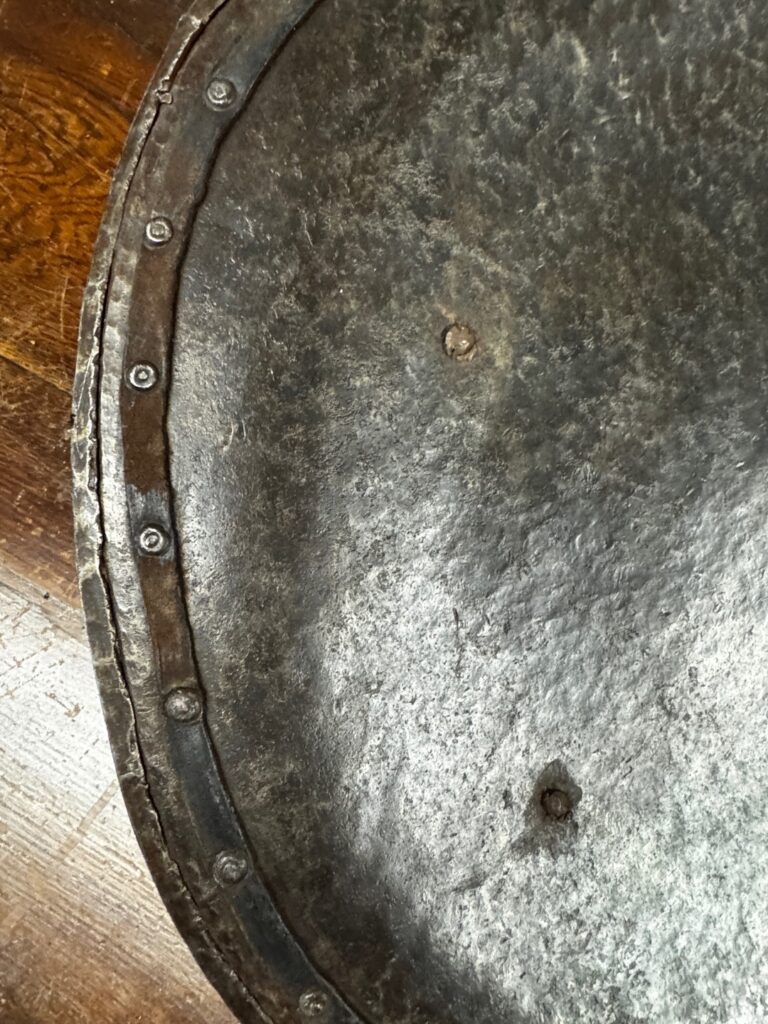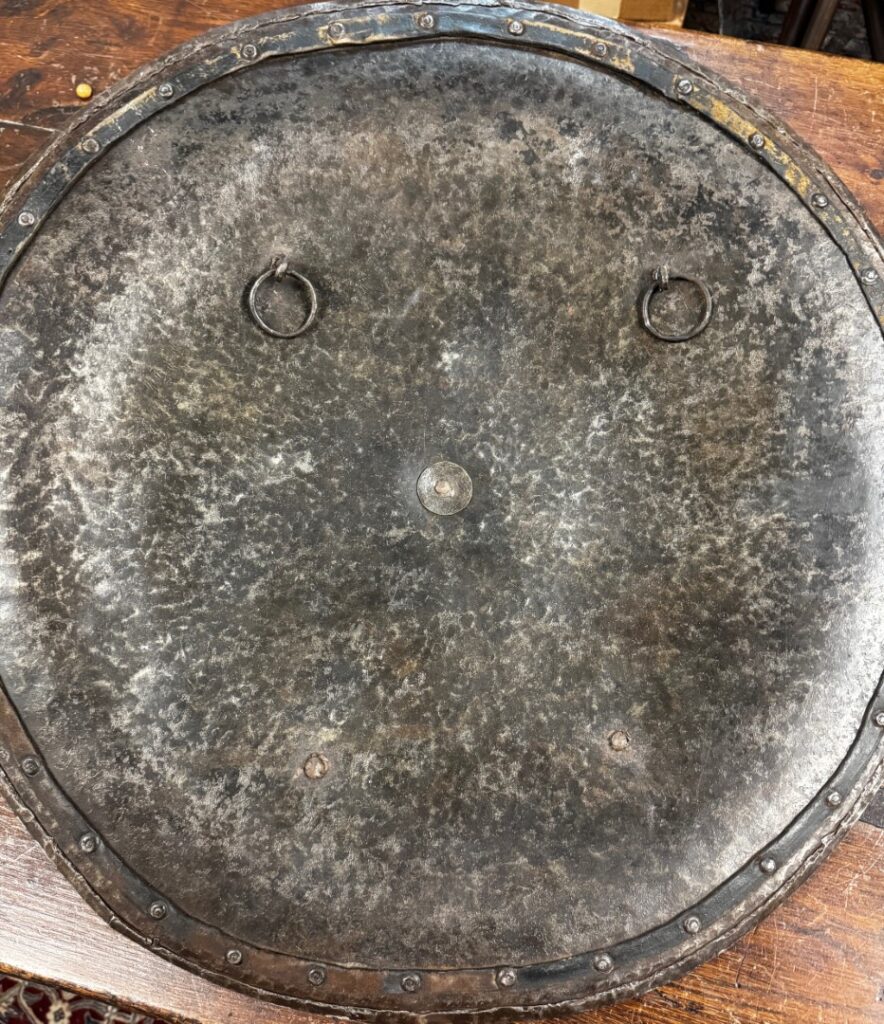1719) DECORATED ITALIAN SHIELD CIRCA 1580 WITH ST GEORGE SLAYING THE DRAGON: A decorated shield is a double winner for any collector. It is a piece of Medieval European warfare and a beautiful Medieval painting—two for the price of one!
Introduction: In Renaissance Europe, painting and depictions were done in contemporary attire. Most depictions of St George are found in 15th-century pavises with him in High Gothic Armor, which is appropriate for the period. This shield ( targe) depicts St George in Renaissance armor, which is appropriate for the period in which this shield was made.
Discussion: The shield was borrowed from the tradition of the Roman legions. The Romans used to paint the symbol of the legions to which they belonged on the shields used by their troops so that they could easily be distinguished from the opponents’s army, even from a distance.
The targe or target is a large circular shield about 26 inches in circumference and equipped with an enarmes and a guige. Most of the decorations that adorn the Medieval targe came from religious figures, mythological figures, plants, or animals. After 1450, with the advent of full-body armor, the shield lost popularity. However, when the arms race between the armorer and gunsmith heated up in the latter part of the 1500s and battlefield tactics for guns were changing rapidly, a heavy bulletproof shield became popular until the early 1600s.
In the race between the gunsmith and the armorer, the shield was the last effort by the armorer to neutralize the advantage of the gun. Many shields, however, were later converted for parade and pageantry. People of great wealth used shields with elaborate designs during parades or other festive occasions to celebrate great battle victories. A well-decorated shield or pavise looks most impressive hanging on a wall. Like any Medieval painting, most shields and pavises with paintings have probably been restored ( re-painted).
Not only did the Medieval/Renaissance shield offer protection during combat, but it also served as a differentiation between enemies and friends during ongoing battles.
Description: A shield constructed of low carbon steel with paint over etching throughout its surface. Retaining remains of its original rivets and leather on its borders. Almost certainly the original spike in the middle. It depicts the famous legend of St. George and the Dragon, in which the Christian knight, St. George, rescues a princess from a dragon—recently conserved/restored to museum standards.
Dimensions: 24 inches.
Place of Manufacture: Almost certainly Veneto.
Conclusion: A decorated shield is a double winner for any collector. It is a piece of Medieval European warfare and a beautiful Medieval painting. A strong recommendation to any collector of arms and armor, Renaissance or Medieval art. Priced to sell today!!!*
Contact Me To Get The Latest Lowest Price Possible From The Owner*

